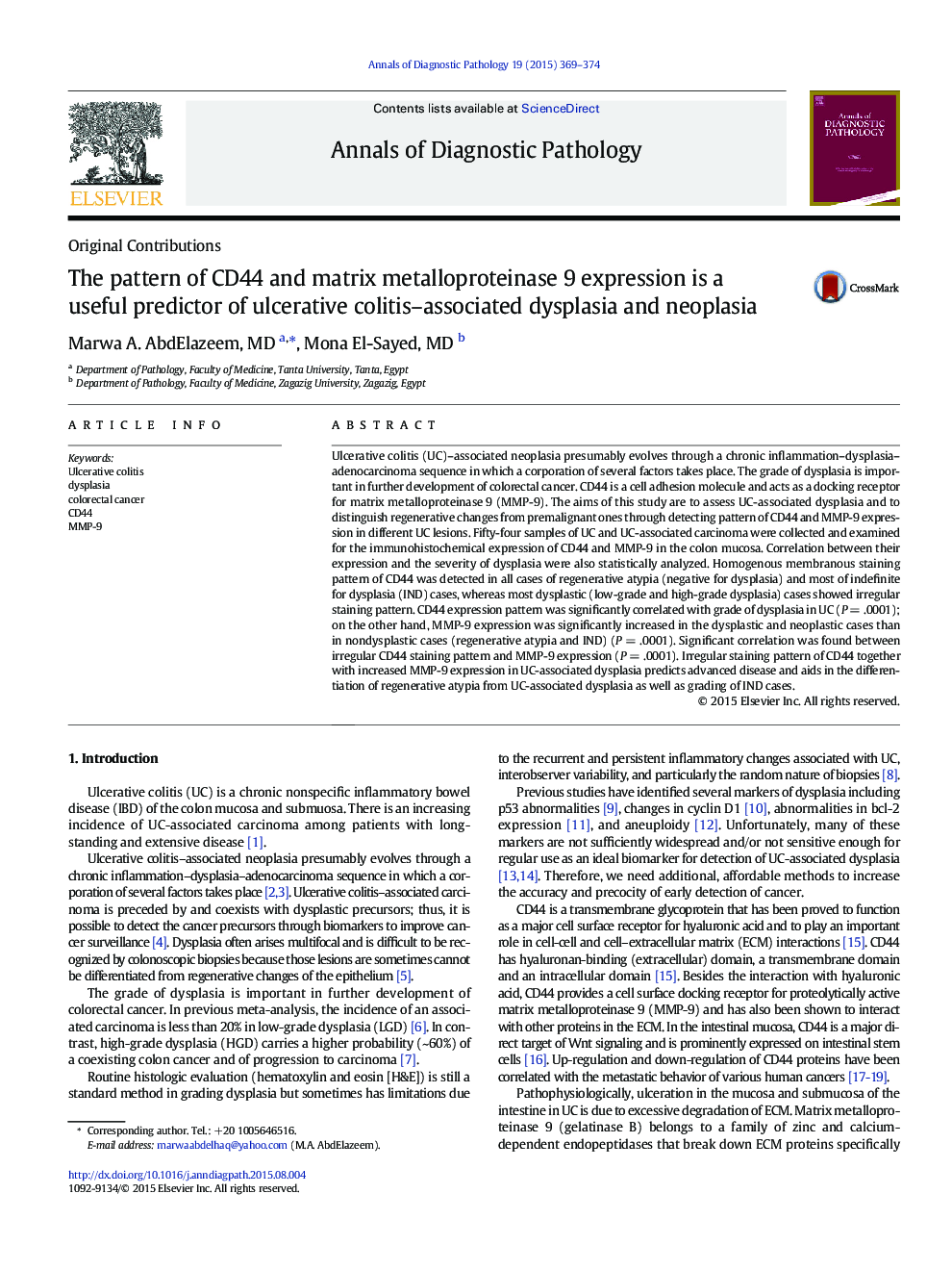| Article ID | Journal | Published Year | Pages | File Type |
|---|---|---|---|---|
| 4129750 | Annals of Diagnostic Pathology | 2015 | 6 Pages |
Ulcerative colitis (UC)–associated neoplasia presumably evolves through a chronic inflammation–dysplasia–adenocarcinoma sequence in which a corporation of several factors takes place. The grade of dysplasia is important in further development of colorectal cancer. CD44 is a cell adhesion molecule and acts as a docking receptor for matrix metalloproteinase 9 (MMP-9). The aims of this study are to assess UC-associated dysplasia and to distinguish regenerative changes from premalignant ones through detecting pattern of CD44 and MMP-9 expression in different UC lesions. Fifty-four samples of UC and UC-associated carcinoma were collected and examined for the immunohistochemical expression of CD44 and MMP-9 in the colon mucosa. Correlation between their expression and the severity of dysplasia were also statistically analyzed. Homogenous membranous staining pattern of CD44 was detected in all cases of regenerative atypia (negative for dysplasia) and most of indefinite for dysplasia (IND) cases, whereas most dysplastic (low-grade and high-grade dysplasia) cases showed irregular staining pattern. CD44 expression pattern was significantly correlated with grade of dysplasia in UC (P = .0001); on the other hand, MMP-9 expression was significantly increased in the dysplastic and neoplastic cases than in nondysplastic cases (regenerative atypia and IND) (P = .0001). Significant correlation was found between irregular CD44 staining pattern and MMP-9 expression (P = .0001). Irregular staining pattern of CD44 together with increased MMP-9 expression in UC-associated dysplasia predicts advanced disease and aids in the differentiation of regenerative atypia from UC-associated dysplasia as well as grading of IND cases.
